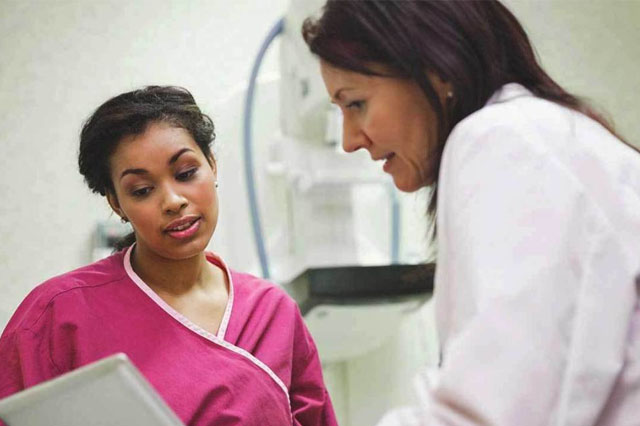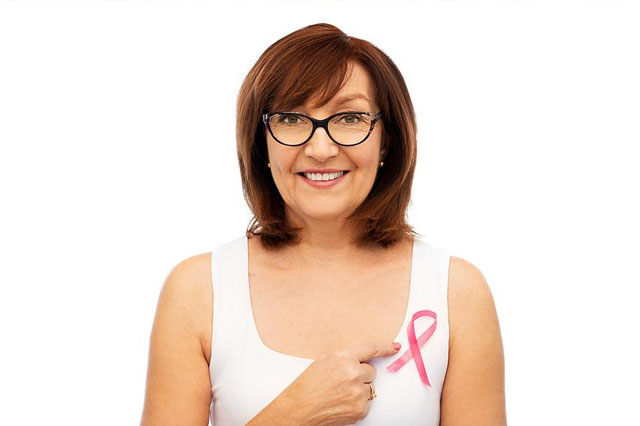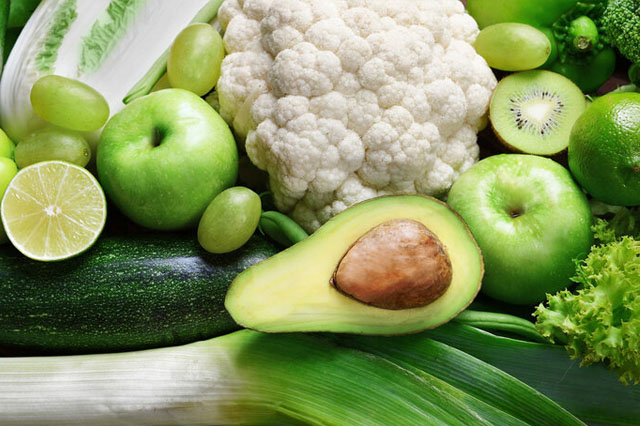- Login
- Cart{{shopingCartNum}}
- English
Breast cancer is actually a malignant tumor formed by excessive proliferation of breast epithelial (ductal or lobular epithelial) tissue.
The International Agency for Research on Cancer of the World Health Organization once released a set of related data. In 2022, the global number of new female breast cancer cases was approximately 2.309 million, accounting for 11.6% of the total new cancer cases worldwide, making it the second largest malignant tumor in terms of incidence globally.
Some people say that having large breasts increases the risk of breast cancer, but in reality, there is no necessary connection between the two, as the main components of breasts are fat and glandular tissue.
People with large breasts are usually due to having more fat, while breast cancer occurs in the glandular tissue, so there is no causal relationship between having large breasts and the likelihood of developing breast cancer.
On the contrary, people with small breasts are more likely to have "dense breasts," which means they have less fat and more glandular tissue, resulting in a higher natural occurrence rate of breast cancer.

(1)Those with unhealthy lifestyle habits such as smoking, drinking alcohol, and irregular sleep patterns;
(2)Women with a history of multiple abortions or chaotic and disharmonious sexual activities;
(3)Those under immense psychological stress or who have experienced significant emotional trauma;
(4) If breast cancer has occurred on one side, the risk of developing cancer on the other side is also very high, especially for those with lobular carcinoma in situ or multifocal cancer;
(5) Those with a history of long-term exposure to exogenous estrogen;
(6)Those who have had breast cystic hyperplasia, especially women with atypical ductal hyperplasia;
(7) Those who started menstruating before the age of 12 and experienced late menopause (after the age of 52);
(8) Women over 40 who have not been pregnant or had their first child after the age of 35;
(9) Those with a family history of breast cancer, especially direct relatives such as mothers or sisters, who have developed cancer before menopause or suffered from cancer.

Breast cancer is not without symptoms; any disease has its own signs of onset. According to Peng Yunlan, a master's student at the School of Medicine of Southwest Jiaotong University, and Wang Haobin, a medical doctor at the Third People's Hospital of Chengdu, if the breasts show the following "signs," one should be aware of the potential risk of cancer.
(1) Abnormal changes in the nipple and areola: such as nipple retraction or elevation, which is a symptom caused by the tumor affecting the position of the nipple and invading the large ducts within the breast. Additionally, one should observe whether the skin of the nipple and areola shows itching, ulceration, scabbing, desquamation, swelling, etc.
(2)Asymmetry of the breasts, breast lumps: The breasts are asymmetrical, or when lightly pressing various parts of the left and right breasts, there are obvious lumps or tenderness.
(3) Nipple discharge: Regular discharge, especially with the presence of blood, should be noted.
(4) Skin changes: Tumors can also cause the skin to peel, become red and swollen, ulcerate, show "orange peel" or "dimple" signs, etc.
(5) Enlarged lymph nodes in the armpit: Lightly pressing the armpits to feel for hard, movable lumps, in advanced stages of breast cancer, metastatic lymph nodes can be felt in the clavicle and contralateral armpits.
In addition, to increase the early detection rate of breast cancer, registered nutritionist and health manager Hu Zhongdong suggests that women who have not reached menopause can perform self-examinations within 2 weeks after their menstrual cycle.
Observe the symmetry of the breasts, changes in skin color, and whether the nipples are sunken; lightly touch the breasts in a circular motion from the inside out to observe if there are any lumps or hard masses; lightly press the outer breast and armpit to check for lumps; and press the areola to observe if there is any nipple discharge.
Like other cancers, the earlier breast cancer is detected, the better the intervention effects. Currently, common breast cancer screening methods in clinical practice include breast examination, mammography, ultrasound examination, and magnetic resonance imaging.
Women at general risk can undergo regular mammography screening after the age of 40, with a frequency of once every 2 years. Women with dense breast tissue can combine mammography with ultrasound examination to increase diagnostic accuracy. Women at high risk of breast cancer are advised to undergo breast screening before the age of 40.

The occurrence of breast cancer is closely related to personal dietary habits. Long-term consumption of fried, high-fat foods, processed and pickled meat products, as well as low intake of soy or soy products and coarse grains, along with regular smoking and alcohol consumption, can increase the risk of breast cancer.
To prevent breast cancer, Associate Professor Fan Zhihong from the College of Food Science and Nutritional Engineering at China Agricultural University suggests focusing on the following foods:
Consuming dark green or orange-yellow fruits and vegetables, which mostly contain high levels of carotenoids, can be beneficial. Research has shown an inverse relationship between the incidence of breast cancer and the concentration of carotenoids in the blood. Therefore, consuming these foods can increase the body's carotenoid content and reduce the risk of breast cancer.
Opt for oils such as tea seed oil, rapeseed oil, or olive oil, as they are high in unsaturated fatty acids, which are more beneficial for human health. Additionally, they have good heat resistance and do not produce carcinogenic substances at high temperatures.
Vegetables such as cabbage and broccoli contain certain glucosinolates, which have anticancer effects. Furthermore, they are rich in polyphenols and various vitamins.
Research has found a correlation between the incidence of breast cancer and the intake of fatty acids in the diet. It is recommended to consume more fish to supplement omega-3 fatty acids and reduce the intake of red meat, effectively lowering the risk of breast cancer.
In addition to dietary changes, it is also important to pay attention to breast protection in daily life. Studies have shown that excessive mental stress and frequent late nights can also pose risks to breast health. Therefore, cultivating healthy lifestyle habits is essential.